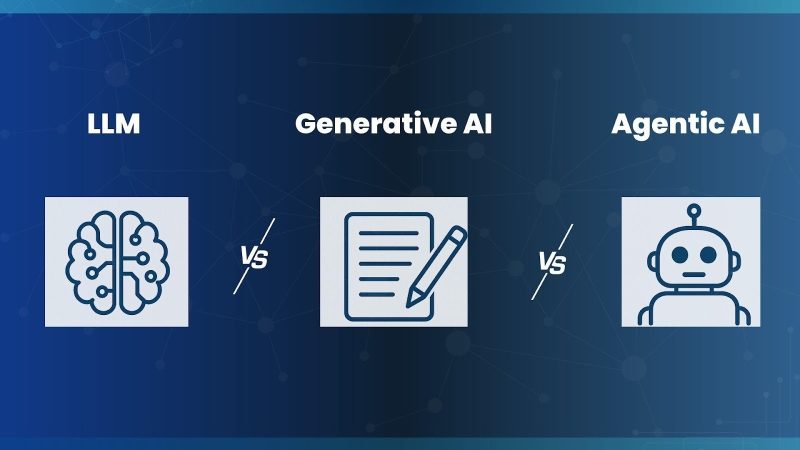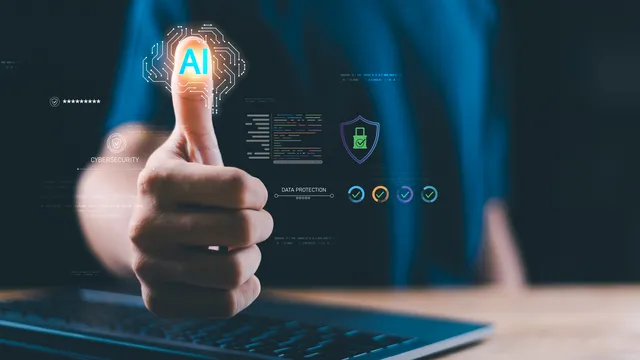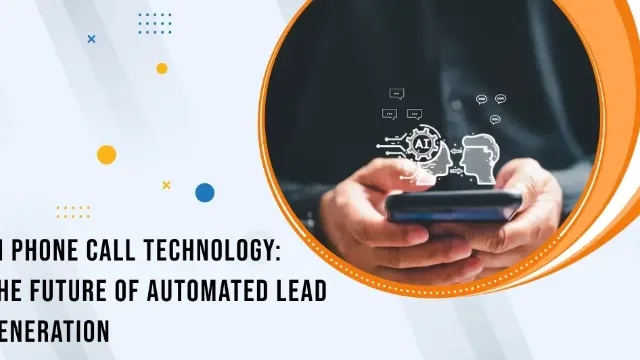How AI and Machine Learning Are Powering the Next-Gen ERP Systems

There was a time when spreadsheet, enterprise systems were mechanical, rule-following beasts obedient but utterly uninspired. They did what they were told: no more, no less. Fast-forward to today. ERP systems have broken out of their shell. No longer passive record-keepers, they are morphing into proactive, perceptive engines. And what’s igniting this change? A combination of a new AI and Machine Learning technologies that don’t just automate the process but understand the business.
Today’s businesses now expect more than just dashboards and data dumps. They want direction. They crave foresight. They demand systems that not only know what happened but suggest what should happen next.
Welcome to the next generation of ERP.
From Ledger-Driven to Logic-Driven
Legacy ERP systems were built for a basic rule that is stability, not spontaneity. They were more focused on designing to centralize data, ensure compliance, and deliver consistency. In their world, surprise was the enemy.
But the modern enterprise thrives on change—market volatility, shifting consumer behavior, evolving regulations. A static ERP becomes a bottleneck in such an environment.
Instead of waiting for human input, AI-enabled ERP platforms like NetSuite—when implemented with a trusted NetSuite implementation partner—observe, learn, and act. They flag inconsistencies before they become crises. They dynamically optimize processes. They evolve—not annually, but continuously.
So what does AI technology actually do in ERP?
It’s hard to think of AI as some magical thing, but its impacts are grounded, even granular. Here’s what it’s doing under the ERP systems:
- Real-Time Pattern Recognition: the latest AI technology identifies subtle trends your eyes could miss and repeated late payments from a region, as well as seasonal demand anomalies, track unusual inventory movements.
- Behavior-Based Recommendations: ML algorithms don’t just analyze the numbers but use them to create meaningful results automatically. They learn from how users interact with the system. That’s how your sales dashboard becomes your dashboard.
- Autonomous Workflows: Routine processes like invoice approvals or purchase order reviews are completely automated without help of any human, also not by any static rules, but through the most intelligent confidence score.
- Proactive Risk Alerts: Imagine being warned about a vendor’s reliability drop due to recent shipment delays, before it affects your production line. That’s not reporting. That’s foresight.
AI in Action: Use Cases That Move the Needle
Let’s go beyond theory. How does this intelligence manifest in real business scenarios?
1. Financial Command with Foresight
Your CFO isn’t just closing books anymore—they’re predicting outcomes. AI models track cash flow, uncover unusual transactions, and even forecast revenue dips based on macroeconomic cues. Errors? They’re spotted before a human even logs in.
2. Supply Chain with a Sixth Sense
What if your ERP could anticipate a raw material shortage in Asia because of a local festival, and adjust orders accordingly? AI’s blend of historic data, external signals, and current inventory lets it do just that.
3. HR That Knows When People Might Leave
Attrition is expensive—and often invisible until it’s too late. ML tools analyze engagement patterns, feedback sentiment, and even productivity metrics to quietly raise flags. It’s like giving your HR team predictive radar.
4. Smarter Selling, Without the Guesswork
AI doesn’t just help you sell—it helps you sell smarter. From lead scoring based on buying behavior to suggesting the ideal time to follow up, AI-driven CRM modules are transforming how sales teams prioritize their pipelines.
ERP Giants Are Betting Big on AI—and Fast
This isn’t a niche play anymore. The big players are all in:
- Oracle is building autonomous capabilities into its ERP, enabling systems that optimize financials without human nudging.
- SAP’s S/4HANA leverages embedded ML for everything from invoice matching to predictive MRP.
- NetSuite layers in AI-driven forecasting and financial planning—especially potent in dynamic mid-market businesses.
- Microsoft Dynamics 365 infuses AI across sales, finance, and operations, turning passive modules into active advisors.
What’s more? AI in ERP is going low-code. Business users can now leverage pre-trained models and customize logic with minimal developer input. The barriers are coming down, fast.
But Not Everything Is Plug-and-Play
For all the magic, AI has its growing pains. A few hurdles that can’t be ignored:
- Garbage In, Garbage Out: Feed your ERP inaccurate or incomplete data, and AI will misfire. Clean, structured data is the true fuel here.
- Opaque Logic Is a Red Flag: If your AI flags a supplier as high-risk, you need to know why. Explainability isn’t optional—it’s essential.
- Integration Fatigue Is Real: Getting your CRM, inventory system, and external data feeds to speak the same language? Easier said than done. AI demands a harmonized digital ecosystem.
- Skill Set Mismatch: You might not need a data scientist on every team, but someone who can bridge the gap between AI output and business action? That’s non-negotiable.
AI in ERP Cybersecurity: Predict, Prevent, Protect
With great intelligence comes great risk—or at least, a new kind.
ERP systems are treasure troves of data: employee records, customer details, bank accounts, transaction histories. AI isn’t just powering productivity; it’s now central to protection.
This level of continuous risk monitoring is impossible with manual oversight. ML models scan thousands of data points per second. More importantly, they evolve, adapting to new forms of threats that signature-based firewalls might miss.
The result? ERP becomes not just the operational core, but the security shield.
AI-enhanced ERPs are increasingly equipped with behavior-based cybersecurity modules.
Also Read: Incorporating AI into Your VA Workflow: What You Need to Know
Competitive Advantage: The AI-Ready Business
Here’s the kicker: adopting AI in ERP isn’t just a tech decision—it’s a strategic moat.
Companies with intelligent ERPs move faster. React quicker. Spot patterns sooner. They reduce waste, delight customers, and outmaneuver competitors. And perhaps most importantly—they learn from every action they take.
So when a competitor wonders why your margins are growing while theirs are shrinking, the answer might be hidden in your ERP. Or more accurately, in what your ERP is now smart enough to tell you.
From Data Silos to Unified Intelligence: AI’s Role in ERP Integration
Modern organizations are drowning in data—but starving for insight. One of the key reasons? Disconnected systems. Your CRM knows what the customer wants, your inventory knows what’s available, your finance knows what’s feasible—but none of them are talking.
AI-powered ERP solutions change that.
By serving as the central nervous system of the enterprise, ERP systems with embedded AI can unify data across departments—then extract intelligence from it. For example:
A spike in website traffic (from marketing) can alert inventory planning (operations) to adjust reorder points automatically.
Delays in vendor shipments (from supply chain) can flag potential cash flow issues (to finance) before they hit the books.
Instead of waiting for manual sync-ups or late reports, you operate in a connected, contextualized environment where every system becomes smarter by being part of the whole.
This isn’t just integration. This is intelligence in motion.
Also Read: Overcoming Common Challenges in Generative AI Application Development Using Machine Learning
The Future: ERP like Human
Where is this all going?
To systems that don’t just run your business—they understand it.
- Conversational ERPs: Ask your ERP, “What’s our top risk this quarter?” and get a smart, contextual reply—backed by data and logic.
- Self-Improving Processes: process workflows that refine themselves based on the actual outcomes with removing bottlenecks without being told.
- Hyper-Personalization at Scale: Everyone from CFO to field representative, sees a different ERP tailored in real-time to their goals, behavior, and context.
This isn’t fiction. It’s happening. Quietly, iteratively, but undeniably.
Conclusion
Artificial Intelligence and Machine Learning aren’t side features anymore. They are the beating heart of next-gen ERP.
They take the dull and make it dynamic. They take the reactive and make it more realistic and predictive than before. And for businesses willing to embrace this shift not just technically but culturally, the rewards are enormous as faster business decisions with more confidence, smarter operations, and a level of clarity that was once unthinkable.
Author Bio
Jagdish Mali
Jagdish is the Co-Founder and director at ERP Peers. With deep experience in ERP consulting and business growth strategy, he has worked across multiple industries helping global clients adopt and scale with NetSuite support services and Celigo solutions. He bridges the gap between marketing, technology, and business operations to drive ERP success.






